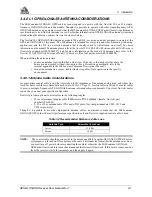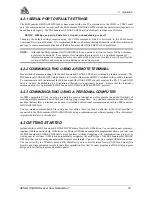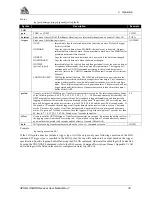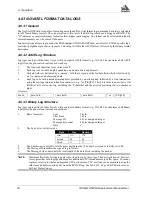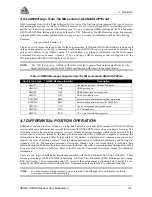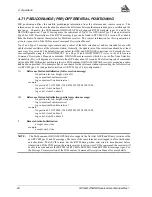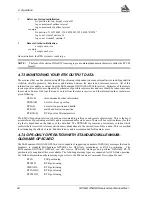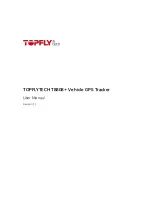
4
Operation
GPS/GLONASS Receiver User Manual Rev 1
31
4.5.1.2 Almanac Data Input Types
The GPSCard has the capability to accept injection of previously logged NovAtel-format ASCII almanac data
($ALMA, $GALA, $IONA, and $UTCA). The GPSCard will interpret this log data as special data input
commands. This provides the user with the advantage of being able to inject recent almanac data into non-volatile
memory, for example after a FRESET where the almanac information has been erased, without having to wait the
5 - 12.5 minutes described in above paragraphs.
There are various ways by which this can be accomplished.
•
By connecting the COM1 or COM2
port from one GPSCard (reference) directly to the
COM1 or COM2 port of another GPSCard (remote). The reference card is assumed to be
tracking satellites for some time and can be commanded by the ALMA or GALA log
command option to output almanac records to the remote card. The remote card can be
assumed to be just powered-up or RESET and will recognize the $ALMA, $GALA, $IONA,
and $UTCA data as special input commands and update its almanac tables with this new
data.
REMEMBER: When connecting two GPSCard COM ports together, the MESSAGES command option should
be
set to "OFF" to prevent inter-card "chatter".
•
The GPSCard can log current almanac data to a PC connected to its COM1 or COM2 port.
Assuming the PC is correctly configured using terminal emulator communications software,
then the PC can redirect the GPSCard almanac log to its disk storage device. At a later time
following a system restart, the GPSCard can have this almanac file (containing $ALMA,
$GALA, $IONA, and $UTCA records) immediately uploaded as a special input command
for immediate use.
NOTE:
This procedure will generally not be required as all GPSCards have an almanac save feature built in
using non-volatile memory.
$ALMA...
Use this special data input command to quickly update the MiLLennium-GLONASS GPSCard almanac tables
following a system restart. It is generated from a GPSCard ALMA log and is accepted as the following format:
$ALMA,1,3.55148E-003,552960,744,-7.8174E-009,6.10457691E-002,-1.1000, 1.90000,-1.8119E-
005,-3.6379E-012,1.45854758E-004,2.65007,
9.55600E-001,1,0,0*0C
...
(one record for each valid satellite)
...
$ALMA,31,4.90379E-003,552960,744,-7.9660E-009,-3.1000,6.13853346E-001,
1.92000,6.67572E-006,3.63797E-012,1.45861764E-004,2.65007,
9.61670E-001,1,0,0*3F







